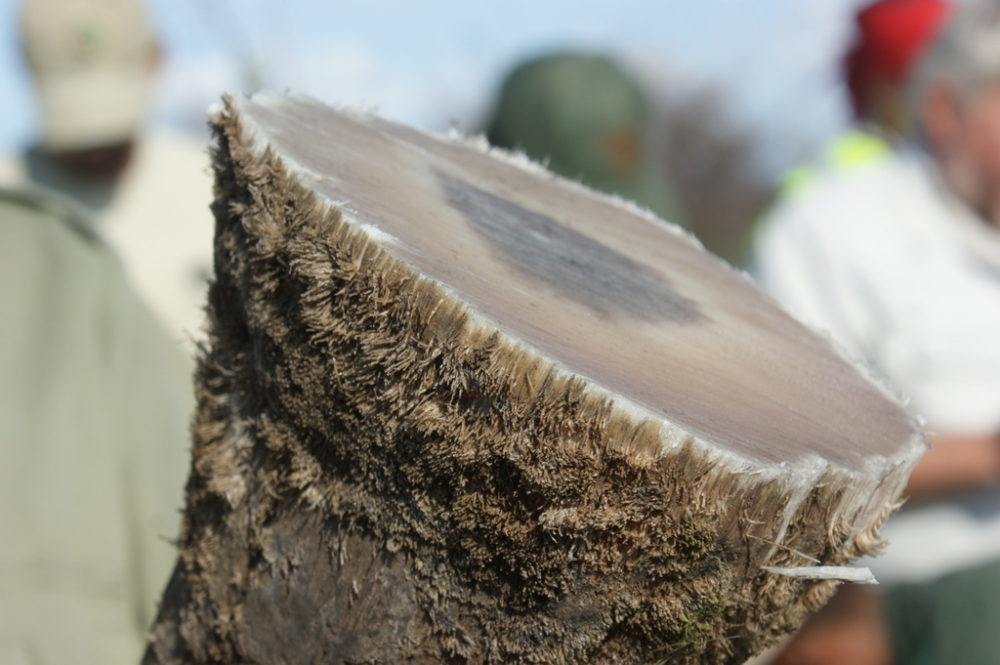On 28 October 2019, scientists from the University of Oxford and Fudan University, Shanghai, released a report detailing the creation of fake rhino horn from horse hair. The scientists hope that this new product could be used as an alternative to real rhino horn in the future and in turn, reduce poaching pressure.
There have been a number of attempts to create synthetic or bio-engineered rhino horns in the past, each with varying degrees of success. However, the sale of synthetic or fake rhino horn has not been shown to improve the situation for rhinos. Worse, the production of synthetic horns could lead to more poaching, as consumers desire ‘the real thing’. As with any market, trends will fluctuate and currently, the key driver of the demand for rhino horn is to show status and wealth. In this case, those wanting to demonstrate their importance would not, opt for an alternative (and likely cheaper) product.
The new study aims to construct a product that could ‘infiltrate the market’ and diminish demand. However, previous research by TRAFFIC demonstrates that a large number of fake items were already on the market, yet an average of two rhinos continue to be poached across Africa every day.
Nonetheless, the most important issue to remember is that the international trade in rhino horn remains illegal. Attempting to sell something described as ‘rhino horn’ internationally is an offence itself under CITES regulations, regardless of whether it is rhino horn or not, i.e. the horsehair horn could only legally be sold if it were not described as rhino horn. But then, in the event of an arrest, could traffickers of real rhino horn defend themselves by arguing that they thought they were transporting fake horn’? For law enforcement officials, horn substitutes could add much more confusion, especially for agencies that are already stretched in terms of resources.
Surely, a critical step for anyone working on the possibility of a rhino horn trade (real, fake or synthetic), is to consult with the experts engaged in rhino conservation in rhino range states in Africa and Asia, and with those dealing with the illegal demand. This ill-conceived project appears to have been launched with no prior consultation or consideration of the issues to which it would give rise.
Cathy Dean, Save the Rhino’s CEO, says:
“Every couple of years a new idea that will ‘solve’ the rhino poaching crisis is unveiled with a flourish. Remember the rhino horn-cam, horn infusions or pink dye anyone? At best, these are well-intentioned but ill-informed; at worst they are a cynical exploitation of desperate conservation managers. Uncritical media coverage of such ‘silver-bullet solutions’ is an unwelcome distraction from tackling the root causes and enablers of poaching: consumer demand, human greed and corruption.”
Read our previous statements on this topic.









